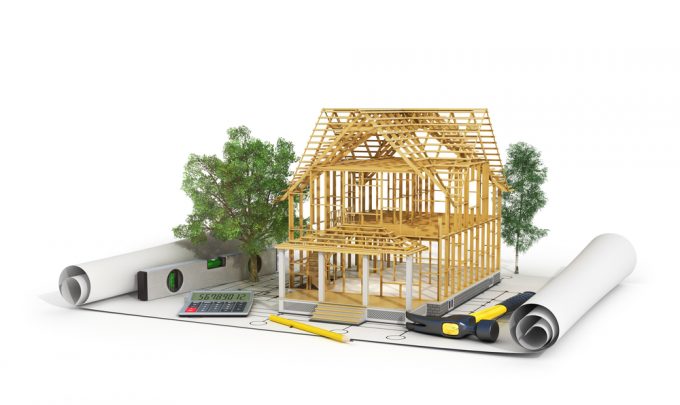This blog introduces the BuildUSA business strategy called the “Prototype Initiative (PI).” It describes the PI’s core components, and how the PI supports the key BuildUSA services and Optimized building.
In order to foster innovation in the Building Industry there needs to be a clear understanding of the current industry environment and its challenges. Ultimately, successful new solutions must be driven by a set of:
1. Values
2. Goals
3. Relationships
4. Processes
that provide a pathway for innovation. To date, most of the Build blogs posts have explored different aspects of these core issues. Going forward, the blog will begin to discuss specific solutions in more detail. All these solutions currently reside under the business umbrella of “BuildUSA.” A few solutions have been briefly touched on in earlier blog posts., Instead of rehashing the ideas that were described earlier, I will provide links to the relevant blog posts.

BuildUSA has developed a business strategy called the “Prototype Initiative (PI).” PI is focused on developing a set of interdisciplinary solutions for the current challenges in the building industry. Ultimately, the goal of the PI is to create a branded building process capable of providing “High Quality,” “High Performing” buildings in a “Shorter Period of Time” and at a “Lower Cost.”
PI is segmented into three core categories: Research, Process, and Execution.
Research
BUSA supports applied research into building products and systems that promote sustainability, enhance occupant comfort, support wellness goals, and improve building performance.
BUSA’s module products will integrate the individual elements of building into prefabricated “Construction Assembly Modules (CAMs)” that can be assembled on site. The custom, one-off nature of building projects means that people build the same things slightly differently every single time. This lack of standardization often leads to inconsistency, disagreement, lost time, and lost money. CAMs standardize the design and installation of complex units such as rooms,
panels, and racks. CAMs also apply to integrated sensor, building automation, and lighting products.
BUSA is currently focused on exploring product offerings in four areas:
1) New building materials evolving out of nanotechnology and accelerated building science research
2) Energy distribution systems such as smart grids and shared dc/ac power distribution
3) Integrated building automation systems that synthesize on-site sensor data and optimize ongoing maintenance
4) Core CAMs that will comprise the first optimized building type, the “Optimized Ambulatory Building” (currently under development).

Process
The Process category centers around the development of a cloud-based collaborative data environment named the Build Collaborative Environment (BCE). The BCE allows all project participants to access, share, and add data within a collaborative environment organized around consistent standards, templates, and workflows. The BCE integrates multiple software applications into a central digital platform, including BIM, digital twin, data analytics, third party apps, and more. Over time, the construction documentation typically developed by the A/E team will be expanded to include the material procurement chain, sub-contractor marketplace, construction management, asset management, operations, and maintenance. Ultimately, the BCE will function as the single source of truth for a project. The BCE will significantly enhance project efficiency, security, quality, and performance.
Execution
The Execution category focuses on BuildUSA’s efforts to develop a series of optimized building types for the healthcare industry. As time goes on, more and more healthcare will be moved out of the critical care hospital box and into the ambulatory setting. Modular solutions provide adaptable, high-performing healthcare workspaces that can be put into operation in much shorter timeframes, and at a much lower cost, than traditional buildings.
Three building types are currently in development:
- The first building set for market delivery is the Optimized Ambulatory Building (OAB). The OAB provides same day health delivery services and offers optimized service suites that allow for standardized horizontal and vertical expansion to adjust to ongoing needs.
- The Spine Building is a “plug and play” structure designed to offer Flexible Service Delivery, with the ability to adjust to community needs. Additionally, it offers on-demand disaster response and surge capacity. Within hours, the building can provide services for an impacted community by quickly adapting to changing seasonal, special event, or disaster needs.
- The Health and Wellness Home provides a home infection control zone with negative pressure containment and Telemetry Healthcare Delivery. Its functional design will dramatically reduce unnecessary healthcare visits, cut costs, and decrease cross-contamination.
There are a variety of consulting services that BuildUSA will offer to support the implementation of these services and products. Additionally, as the BCE accumulates more and more data, powerful Reporting and Predictive Analytics tools will provide important insights to users.
We are in active discussions with software vendors who will be providing applications for the BCE environment and manufacturer/distributors who will be providing CAMs for the optimized building environment. If your company is interested, or you know of companies that may be interested, please contact us at info@syntecgroup.com. We are very eager to explore how your products/services will fit in with BUSA.
